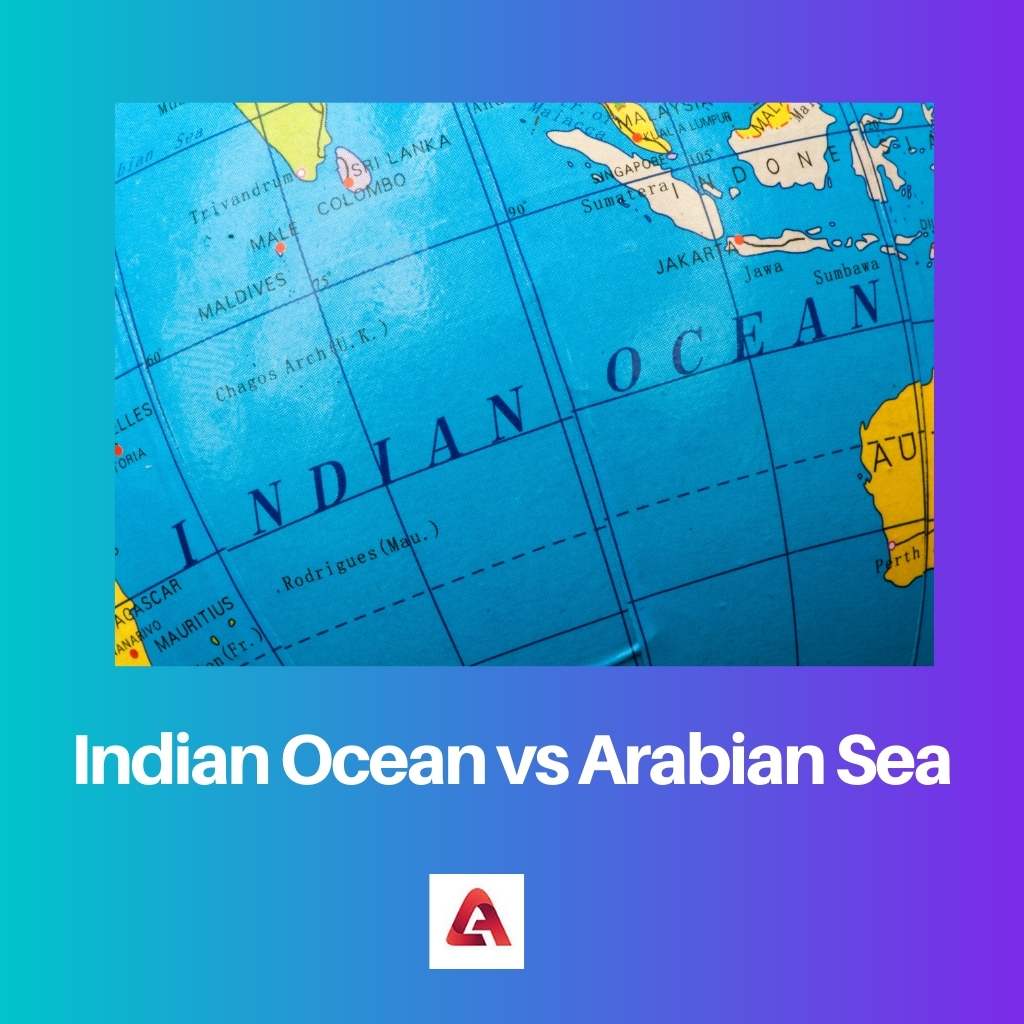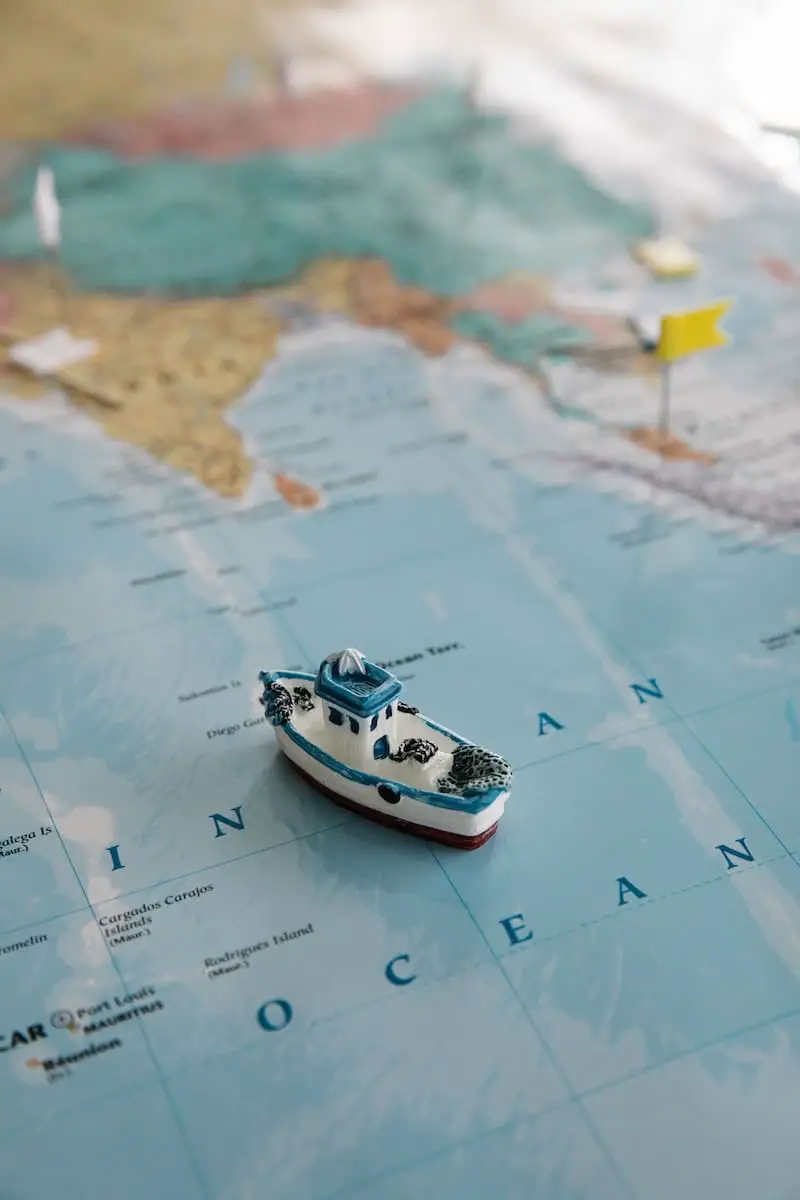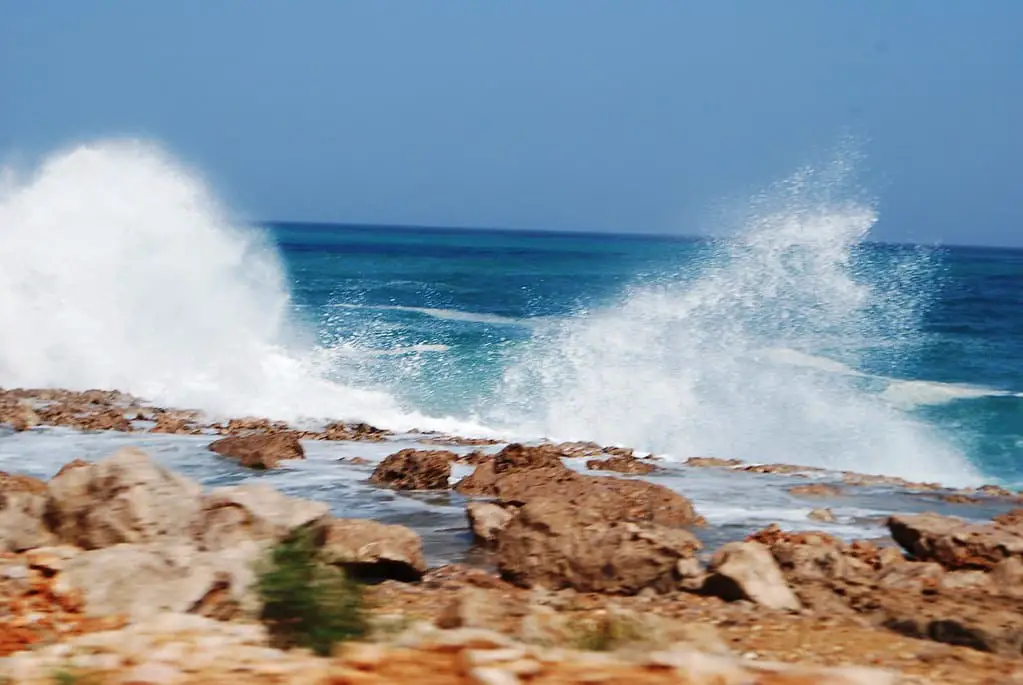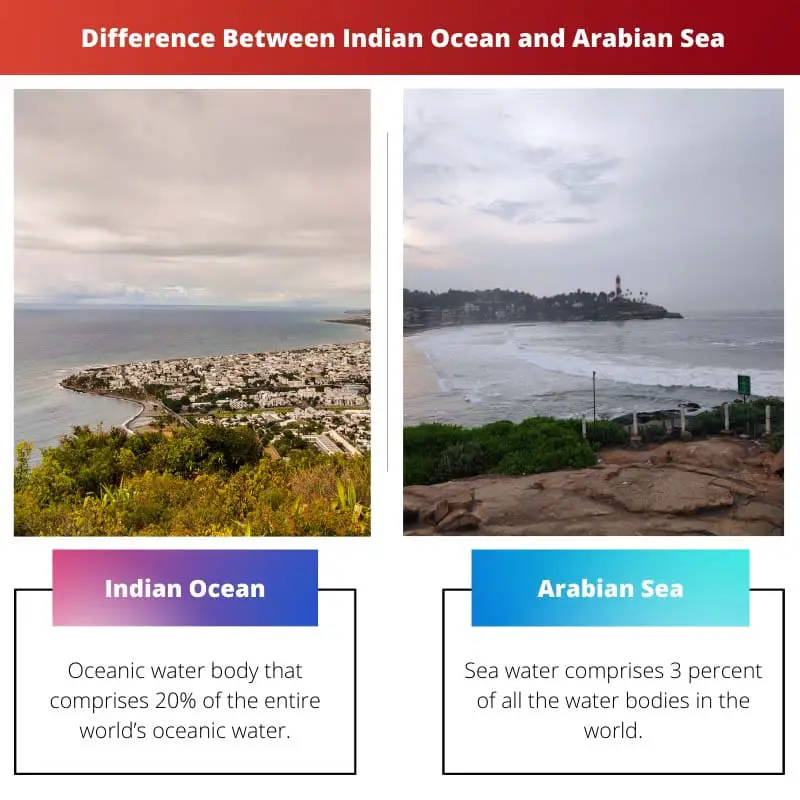India and Africa are separated by the Indian Ocean, which is nicknamed after India. It is the world’s third-biggest marine body, covering 68.556 million square kilometres and accounting for 20% of the vast expanse of water in the whole world.
The Arabian Sea is a section of the Indian Ocean in between the Arabian Peninsula and the Indian Ocean region.
Because it is located in the northwest corner of the Indian Ocean, it is evident that the Arabian Sea and the Great Indian Ocean share the land. However, there are several distinctions between these two bodies of water.
Key Takeaways
- The Indian Ocean is the world’s third-largest ocean and borders Africa, Asia, Australia, and Antarctica. At the same time, the Arabian Sea is a northwestern extension of the Indian Ocean, bounded by the Arabian Peninsula and India.
- The Indian Ocean is known for its rich marine biodiversity. It contains several large islands, while the Arabian Sea is home to a diverse range of marine life, including dolphins, whales, and sea turtles.
- The Indian Ocean has played a significant role in world history as a key trade route, while the Arabian Sea is important for oil exploration and shipping.
Indian Ocean vs Arabian Sea
Indian Ocean is an ocean that separates India and Africa and is the third biggest marine body in the world. The ocean consists of 20% of the oceanic water in the world. Arabian sea is a sea and a part of the Indian Ocean, located in between the Indian Ocean region and the Arabian Peninsula.

The Indian Ocean is a saline water basin covering around one-fifth of the worldwide ocean basin. It is the world’s tiniest, newest, and most physically complicated of the three main waterways (Pacific, Atlantic, and Indian).
It spans for further than 6,200 miles between the southernmost points of Africa and East Asia, covering an area of roughly 27,243,000 sq miles.
The deepest part of the Indian Ocean is 12,200 feet, with the Sunda Deep in the Java Trench off the southwest shore of Bali’s Indonesian island reaching 24,400 feet.
The Arabian Maritime is located on the northern corner of the Indian Ocean, encompassing approximately 1,500,000 sq miles and serving as a major shipping route connecting Asia and Europe and accessible especially to the Indian ports.
The Horn of Africa as well as the Arabian Peninsula border, that one on the west, Pakistan on the northwest, India on the east, and the rest of the Indian Ocean on the southeast.
The Gulf of Oman links the Mediterranean water body to the Persian Gulf through the Strait of Hormuz to the northwest.
Comparison Table
| Parameters of Comparison | Indian Ocean | Arabian Sea |
|---|---|---|
| Water Body Type | The oceanic water body comprises 20% of the entire world’s oceanic water. | Sea water comprises 3 percent of all the water bodies in the world. |
| Area | 70.56 million square kilometres. | 3.86 million square kilometres. |
| Deepest Point | The Indian Ocean’s deepest point is 8,047m Java trench | The deepest point is 4,652 meters. |
| Bordering Countries | India, Sri Lanka, Australia, Andaman and Nicobar Islands. | India, Iran, Maldives and the Gulf of Oman and Pakistan too. |
| Rich in | The Indian Ocean ocean beds are rich in minerals like nickel, Cobalt and Manganese. | The coast of the Arabian sea is rich in oil and petroleum. |
What is the Indian Ocean?
The third humongous and yet smallest of the three oceans, the Indian Ocean, is a body of water comprising around 20% of the planet’s seafloor.
It is bounded to the north by Southwest Asia (which includes the Hindustan aka Indian peninsula, thus the name), the Middle East and Egyptian basin on the west, the Malay Archipelago, the Sunda Isles, as well as Oceania and Australia on the east.
The 20° east longitude extending south from Cape Agulhas separates this from the Atlantic Ocean, while the 147° east longitude separates it from the great Pacific ocean.
In the Gulf Region, the Indian Ocean reaches its highest point at about 30 ° n latitude.
At the southernmost points of Africa and East Asia, this ocean is approximately 11,000 kilometres wide, with a total size of 73,556,000 square kilometres, including the Red Sea and the Middle East region Arabian and Caspian sea.
The heritage of the Indian subcontinent is founded on rich cultural interactions that started 7 millennia ago in the Gulf Region, the Mediterranean Sea, as well as the Arabian Sea, whenever a web of trading ties was established.
It eventually evolved into major inhabited areas inside geographically defined boundaries along the Indo – pacific coasts, and its maritime belt now includes 36 states with a combined population of more than 10 billion people.
It was once called an “overlooked ocean” since it was the smallest and youngest of all oceans.

What is the Arabian Sea?
The Arabian Sea here is between the Middle East as well as the subcontinent at the northern end of the Persian Gulf. It has a total size of 1,500,000 sq miles, with the Gulf of Oman to the northwest and the Gulf of Aden to the southwestern.
The sea’s height fluctuates as it approaches the Persian Gulf to the southeast, but it’s around 8,910 feet.
Several gulfs and straits link the Arabian Sea to neighbouring water bodies, providing a constant route through the sea.
The Gulf of Oman, which joins the Arabian Sea towards the Gulf Region, are the two largest but most significant gulfs that flow through into the Mediterranean region.
Nevertheless, gulfs aren’t the only way to get through the Arabian Sea; two major rivers flow towards its shores.
The Arabian Sea is supplemented by water running down the Indus and Narmada streams (Indian tributaries), which have been the main routes to the sea.
The Arabian Sea’s depth surpasses 9,900 feet for the most part because there are no islands in the centre.
Other than in the northeast, off India and Pakistan, deep water gets near the neighbouring nations.
The Lakshadweep coral reefs are part of the Maldives Slope, an underwater ridge that continues farther southward into the Indian Ocean and rises well above the surface to produce the Maldives’ small islands.

Main Differences Between the Indian Ocean and the Arabian Sea
- The Indian Ocean is counted as the 3 biggest ocean in the world, whereas the Arabian sea is the 5th biggest sea in the world.
- The Indian Ocean is located in the Indian peninsula, whereas the Arabian sea is located in the Mediterranean region near UAE.
- Indian ocean beds are rich in minerals like manganese, nickel, and cobalt, whereas the Arabian sea coast is reserved for petroleum and natural oil.
- The Indian Ocean’s deepest point is the 8,047 m Java trench, whereas the deepest point of the Arabian sea is 4,652 m.
- The Indian Ocean is bordered by Australia, India, and Sri Lanka, whereas India, Iran, Maldives, and the Gulf of Oman border the Arabian sea.




